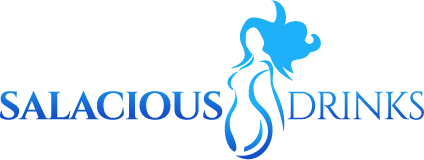Hey Y'all,
Let’s talk about truth in a bottle.
When you pick up a bottle of water and it says “spring” or “artesian,” does that actually mean the water came bubbling out of some pristine mountain or ancient well? Not always.
In fact, the vast majority of bottled water sold in the U.S. isn’t from a natural source at all. According to recent data, over 60% of the bottled water on American shelves is purified municipal water—yes, that means it started as tap. It may be filtered, reverse-osmosis’d, or even had minerals added back in, but at its core? It’s glorified tap water wearing a fancy label.
So, what does it really mean when we talk about authentic water sources? Let’s explore the gold standard: natural, single-source waters.
🔍 What Is a Verified Source?
An authentic water source is one that:
-
Comes from a single, protected, and sustainable location in nature.
-
Is bottled at the source.
-
Is naturally filtered through geological layers like rock, sand, and volcanic soil.
-
Requires no chemical treatment or artificial purification.
At Salacious Drinks, we focus only on these naturally sourced waters. Here's why they matter:
🌋 Types of Authentic Water Sources
1. Protected Aquifers
These underground reservoirs of water are shielded from surface contamination. Brands like Virginia Artesian draw water from deep, pressurized aquifers, meaning the water is untouched by man until bottled.
2. Volcanic Springs
Water that has percolated through volcanic rock is often high in minerals like silica, magnesium, and bicarbonate. Think Sant Aniol from Spain or Socoani from Peru—waters with a volcanic signature you can taste.
3. Glacial Meltwater
Clean, ancient water released slowly from glaciers is some of the most naturally soft water on earth. Brands like Clear Alaskan Glacial capture this purity and bottle it right where the melt begins.
4. Artesian Wells
These wells tap into pressurized aquifers where water naturally rises to the surface. Because of the pressure and natural filtration, these sources (like Waiākea in Hawaii or Proud Source in Idaho) don’t require artificial processes.
🕵️♀️ How to Spot the Real Deal
Not sure if that bottle in your cart is the real thing? Here are some Waterlady tips:
-
Look for the phrase "bottled at the source." This is key. If it’s trucked from a facility to a bottling plant, that’s a red flag.
-
Check the label for the source location. It should name a spring, aquifer, or specific geographic region—not just “USA” or “public water source.”
-
TDS (Total Dissolved Solids) should be listed. Natural waters will have a unique mineral makeup—and they proudly share it.
-
Visit the brand’s website. Many transparent brands share lab reports, geological data, and source photos.
💧 Why We Should Care
Because water isn't just water.
Natural water sources have a terroir, just like wine. They carry the essence of the land, its minerals, and its age-old filtration process. Beyond taste, authentic waters offer:
-
Functional hydration thanks to natural electrolytes.
-
Transparency and sustainability in sourcing.
-
A deeper connection to the geology and culture of a region.
When we support brands with verified sources, we help protect those sources for future generations—and push the industry to do better than just rebottling tap.
🛒 Want to Taste the Difference?
Every bottle we sell at SalaciousDrinks.com is source-authenticated. No tap. No trickery. Just nature’s finest waters, curated by your resident water sommelier (that’s me!).

